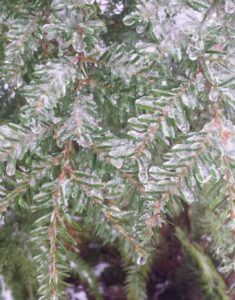 You might have heard the phrase, “stop and smell the roses” used to emphasize the importance of noticing the little parts of life. At the Preserve, we certainly have plenty of native nootka roses to stop and smell, but what about in the winter when there are no flowers to enjoy?
You might have heard the phrase, “stop and smell the roses” used to emphasize the importance of noticing the little parts of life. At the Preserve, we certainly have plenty of native nootka roses to stop and smell, but what about in the winter when there are no flowers to enjoy?
We challenge you to take a walk down SHADOW Lake Nature Preserve’s famous Boardwalk trail and notice all of the small details that are easy to miss! Scroll throu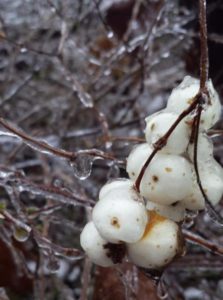 gh the photo journal below to see the bog in our recent snows and get up close and personal with a micro-tour of our 5,000-year-old peat bog!
gh the photo journal below to see the bog in our recent snows and get up close and personal with a micro-tour of our 5,000-year-old peat bog!
The bright green needles of the Douglas Fir can be enjoyed all year round! As an evergreen conifer, the Douglas Fir does not lose its foliage in the winter – instead the thin needles continue to photosynthesize even under low light conditions like our Washington winter. The typical conical shape of a Douglas Fir (and other evergreen conifers) helps the tree shed snow and prevents branch breakage from limbs over-weighted with snow.
White clusters of berries cling to the stems of a snowberry – one of our region’s key understory shrubs. Snowberry can be a restoration biologist’s best friend! Although snowberry
produces white berry-like fruits in spring that persist throughout the winter, the main way that this plant reproduces is underground! Highly branching roots produce new shrubs vegetatively (through cloning). This extensive root structure is also important for the ecology of our wet climate. The roots in soil act like rebar in concrete – holding soil in place and preventing erosion much more effectively than weedy species.
Frost glitters on this beautiful cluster of licorice fern along the boardwalk trail! Licorice fern takes its name from the plant’s flavorful root, which has a distinctly sweet
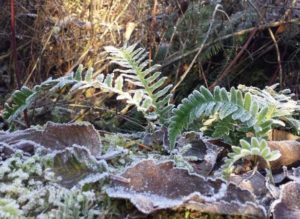 licorice taste. Although this fern was growing on a fallen log, many licorice ferns grow on live big leaf maples. The ferns and other plants that grow on living trees form a complex mini-ecosystem within the forest. Each tree will have a unique blend of ferns, lichens, and moss species giving every tree a unique micro-habitat.
licorice taste. Although this fern was growing on a fallen log, many licorice ferns grow on live big leaf maples. The ferns and other plants that grow on living trees form a complex mini-ecosystem within the forest. Each tree will have a unique blend of ferns, lichens, and moss species giving every tree a unique micro-habitat.
Did you know that moss is one of the oldest land plants, evolutionarily speaking? Plants which looked very similar to our common moss were probably some of the first 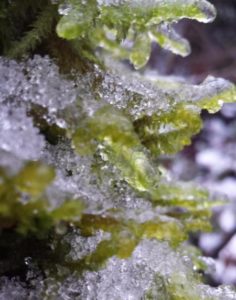 to come out of the ocean and live on land. Therefore, mosses represent an interesting transition between life in the sea and life on land. Mosses are currently being investigated by scientists because of their ability to self-repair damage done to their DNA. Even if DNA is completely broken in half (called a double-strand break), mosses can successfully fill in the gaps and prevent the cell from being lost.
to come out of the ocean and live on land. Therefore, mosses represent an interesting transition between life in the sea and life on land. Mosses are currently being investigated by scientists because of their ability to self-repair damage done to their DNA. Even if DNA is completely broken in half (called a double-strand break), mosses can successfully fill in the gaps and prevent the cell from being lost.
This hearty deer fern makes its home right along the boardwalk trail! Did you know that deer ferns, also known as wood ferns, produce two types of leaves? The sterile leaves (pictured here) are thick with wavy edges. The reproductive leaves are much skinnier and have rows of spores on the underside of the leaf. Make sure to check in at the Preserve in spring to 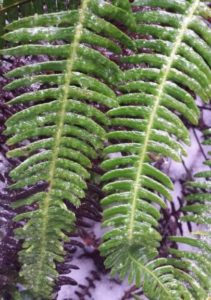 sneak a peak of these special reproductive leaves in spring!
sneak a peak of these special reproductive leaves in spring!


Recent Comments